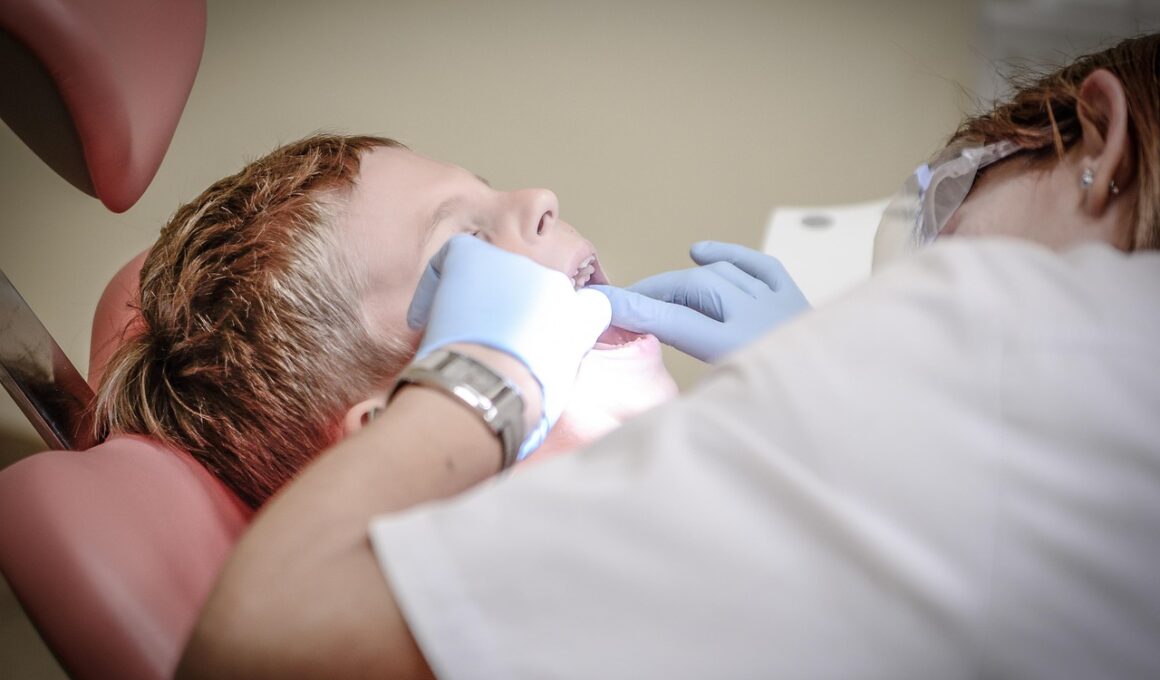Tax Planning Tips for Paying Dental and Vision Care Costs
Managing healthcare expenses such as dental and vision care can be a challenge. However, careful tax planning can significantly alleviate the financial burden associated with these costs. One effective strategy is to utilize Flexible Spending Accounts (FSAs) or Health Savings Accounts (HSAs). These accounts allow individuals to contribute pre-tax dollars, making healthcare services more affordable. By estimating yearly dental and vision expenses, you can contribute the optimal amount to your FSA or HSA. Additionally, consider setting up automatic contributions to maximize your savings potential while minimizing taxable income. Moreover, it is important to keep records of all expenses related to these healthcare services. This includes receipts for visits, treatments, and any supplies needed for your dental or vision health. When filing taxes, these records will support your claims for tax deductions. Educating yourself about your health insurance benefits is also key. Many plans cover preventive services, which can save you a considerable sum in out-of-pocket expenses. Staying informed about what your insurance covers ensures that you take full advantage of available resources to maintain your healthcare.
Another useful tool for tax planning in dental and vision expenses is itemizing deductions. If your total qualified medical expenses exceed 7.5% of your adjusted gross income, itemizing might be beneficial. This deduction can cover a wide range of services, including dental check-ups, corrective lenses, and orthodontics. Keep track of all relevant expenses throughout the year, as these can add up quickly. If you have a significant amount spent on these services, it may be advantageous to consult a tax professional who can guide you through the process and ensure you maximize your eligible deductions. Furthermore, certain preventive care expenses, like routine vision exams and cleanings, are often covered by insurance policies with no out-of-pocket costs. Ensure to find out your benefits so you can take full advantage, enhancing not only your dental and vision health but also your financial strategy. Using a tax calculator can help you estimate potential savings from tax deductions related to healthcare expenses. This approach supports smart financial planning, especially in a year when healthcare costs may be particularly high.
Healthcare Costs and Tax Credits
Understanding available tax credits can significantly impact your overall tax strategy. While the IRS does not provide specific credits exclusively for dental and vision expenses, you might qualify for various healthcare-related credits. The Premium Tax Credit, for example, assists low-income families to afford health insurance, which can include dental and vision coverage under certain circumstances. This is crucial for families with children who need orthodontic treatments or vision correction. Many states offer additional tax deductions or credits for children’s health expenses, supporting parents in managing costs. Frequent review of the IRS guidelines and state-specific tax credits is necessary to benefit from these incentives. Furthermore, consider contributing to your child’s 529 plan when saving for dental and vision needs related education, such as orthodontics. In many cases, families can use these funds to cover expenses that may not normally be available through traditional savings accounts. By leveraging tax credits and deduction opportunities, individuals can maximize their financial resources while ensuring access to necessary healthcare services.
Another strategy for tax planning around dental and vision care is to stay proactive about health needs. Schedule regular appointments to avoid larger unforeseen expenses later. Preventive care often reduces long-term costs, and being timely with check-ups can lead to discovering issues earlier. Many experts also advise maintaining strong records of all procedures performed, validating their necessity for tax purposes. You’ll want to ensure expenses are well-documented if any audits arise. Moreover, some preventive services are routine and can be performed within the confines of your health policy, meaning they may be covered entirely. Stay in communication with your healthcare providers about cost-effective options available to you within your insurance plan. Many practices offer payment plans to manage larger costs while ensuring you receive timely medical attention. Additionally, keeping informed about any changes to your health plan during open enrollment can lead to adjustment and savings opportunities as new plans may offer better coverage for necessary services.
Utilizing Tax Professionals for Insights
Consulting with tax professionals can be a game-changer when implementing effective tax strategies for healthcare. They can provide tailored advice based on your individual financial situation, ensuring that you are utilizing all opportunities for deduction, credit, and expense management effectively. Professionals can also assist in educating you about the tax implications of different healthcare spending options. It’s imperative to verify eligibility for various tax benefits as the regulations may change yearly. Furthermore, they can offer guidance on how to structure your overall finances to maximize tax savings regarding dental and vision care. Your financial advisor may also advise setting up a separate savings account specifically for healthcare expenses, designed to handle the costs efficiently as they arise. This focused approach allows you to plan ahead rather than reactively managing finance. Access to their resources might reveal tax-saving strategies that you were previously unaware of. Ultimately, the cost of consulting a tax professional can pay off significantly by ensuring you save at tax time. Establish a relationship with a knowledgeable advisor to enhance your understanding and management of your healthcare expenses.
Lastly, keep an eye on tax law updates, as proposed changes can directly affect healthcare financing. There are often discussions in Congress regarding tax credits and deductions that may evolve over time. Staying engaged with those updates ensures you are prepared to adjust your tax planning accordingly. A dedicated educational strategy involves subscribing to tax updates or newsletters that focus on healthcare expenditures. This will help you remain informed about potential changes in legislation that may enhance or reduce available benefits. Engaging in forums or groups surrounding healthcare financial planning can also provide shared insights from individuals facing similar challenges. These interactions could reveal valuable tips not readily available through typical financial channels. Always monitor your expenses carefully and align them with your tax strategy proactively. Maintaining a strong hold on your healthcare finances, alongside tax planning, yields better long-term results and ensures you maximize your potential savings. By taking these smart measures, you can better navigate the complexities of paying dental and vision care costs.
Always remember that the right approach to tax planning regarding healthcare expenses involves diligence, research, and effective communication with healthcare providers and tax professionals. This strategy encompasses taking full advantage of healthcare benefits, recording expenses meticulously, and staying informed about any relevant financial policies. Achieving these goals provides a buffer against the unexpected costs that arise from dental and vision treatments. The effort you invest into your tax planning directly influences your overall financial wellness. Each step taken toward informed healthcare choices and financial strategies promotes a more sustainable financial future. Remember, your health significantly impacts your long-term financial growth; making your dental and vision care costs work for you in the tax arena can only benefit you. With proper planning and execution, you can alleviate some financial stresses associated with these vital healthcare aspects. Therefore, invest time into understanding and implementing these strategies, enhancing both your financial and healthcare well-being. Ultimately, confidently navigating tax planning ensures that you control the expenses tied to dental and vision care as you secure the health of yourself and your loved ones.
Utilizing an array of strategies allows individuals to effectively manage their healthcare-related tax burdens. Whether through savings accounts, credits, or consulting professionals, each option offers unique benefits. The ability to predict and prepare for upcoming costs highlights the value of engaged financial planning. All these strategies contribute towards not just cost savings but also improved access to necessary treatments and preventive care options. In a continuously fluctuating tax landscape, having a solid plan provides peace of mind. Fortunately, the tools available for effective tax planning are numerous and beneficial, lending individuals and families the power to take charge of their health expenses. By implementing these strategies, you can make meaningful progress in your financial journey, understanding the importance of informed decision-making in healthcare spending. Investing in your health today guarantees better financial management tomorrow. Therefore, share these insights with friends and family who may also face similar pressures. Knowledge is power, particularly in navigating the complexities of tax planning efficiently.


